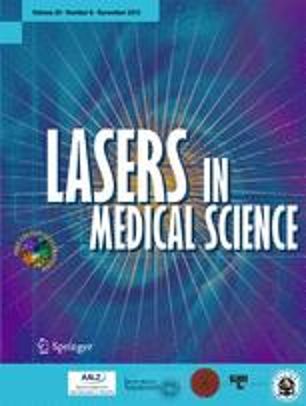Category: biotech/medical – Page 2,642
Ending Age-Related Diseases Conference: May Update
May is almost over, so it’s time to check in with the Ending Age-Released Diseases conference and see how things are developing with the event.
If you’re unfamiliar with us, we’re hosting our second annual conference at the Cooper Union in New York City on July 11-12th this year. It will feature some of the leading names in both aging research and biotech business and investment coming together to share their knowledge and insights with the audience.
Aging research is on the cusp of some major breakthroughs in the battle against age-related diseases, and we invite you to join us for an action-packed event filled with exciting talks and discussion panels featuring some of the leaders of aging research and the biotech business.

Six Paths to the Nonsurgical Future of Brain-Machine Interfaces
DARPA has awarded funding to six organizations to support the Next-Generation Nonsurgical Neurotechnology (N) program, first announced in March 2018. Battelle Memorial Institute, Carnegie Mellon University, Johns Hopkins University Applied Physics Laboratory, Palo Alto Research Center (PARC), Rice University, and Teledyne Scientific are leading multidisciplinary teams to develop high-resolution, bidirectional brain-machine interfaces for use by able-bodied service members. These wearable interfaces could ultimately enable diverse national security applications such as control of active cyber defense systems and swarms of unmanned aerial vehicles, or teaming with computer systems to multitask during complex missions.
“DARPA is preparing for a future in which a combination of unmanned systems, artificial intelligence, and cyber operations may cause conflicts to play out on timelines that are too short for humans to effectively manage with current technology alone,” said Al Emondi, the N program manager. “By creating a more accessible brain-machine interface that doesn’t require surgery to use, DARPA could deliver tools that allow mission commanders to remain meaningfully involved in dynamic operations that unfold at rapid speed.”
Over the past 18 years, DARPA has demonstrated increasingly sophisticated neurotechnologies that rely on surgically implanted electrodes to interface with the central or peripheral nervous systems. The agency has demonstrated achievements such as neural control of prosthetic limbs and restoration of the sense of touch to the users of those limbs, relief of otherwise intractable neuropsychiatric illnesses such as depression, and improvement of memory formation and recall. Due to the inherent risks of surgery, these technologies have so far been limited to use by volunteers with clinical need.
Optical device decomposes a beam into a Cartesian grid of identical Gaussian spots
A research team has developed a light beam device that could lead to faster internet, clearer images of space and more detailed medical imaging.
University of Queensland researcher and optical engineer Dr. Joel Carpenter worked with Nokia Bell Labs to build the device to tackle the challenge of splitting light into the shapes it is made up of, known as modes.
“Splitting a beam of light into colours is easy because nature gives you that one for free—think of rainbows or when light shines through glass at an angle,” Dr. Carpenter said.

Ebola confirmed in a city of more than 1 million in Congo
JOHANNESBURG (AP) — The global health community gulped Thursday with the announcement that a case of Ebola had been confirmed in a city of more than 1 million in Congo, bringing the latest outbreak of the often deadly hemorrhagic fever out of remote rural areas. “Confirmation of urban #Ebola in #DRC is a game changer in this outbreak – the challenge just got much much tougher,” the World Health Organization’s emergencies chief, Dr. Peter Salama, said on Twitter. Here’s a look at the outbreak.
What is Ebola?
Ebola is a virus that without preventive measures can spread quickly between people and is fatal in up to 90 percent of cases. The symptoms include fever, vomiting, diarrhea, muscle pain and at times internal and external bleeding. Symptoms can start to occur between two and 21 days from infection, according to WHO.



Effect of low-level laser therapy on mesenchymal stem cell proliferation: a systematic review
Low-level laser therapy (LLLT) has been used in several in vitro experiments in order to stimulate cell proliferation. Cells such as fibroblasts, keratinocytes, lymphocytes, and osteoblasts have shown increased proliferation when submitted to laser irradiation, although little is known about the effects of LLLT on stem cells. This study aims to assess, through a systematic literature review, the effects of LLLT on the in vitro proliferation of mesenchymal stem cells. Using six different terms, we conducted an electronic search in PubMed/Medline database for articles published in the last twelve years. From 463 references obtained, only 19 papers met the search criteria and were included in this review. The analysis of the papers showed a concentration of experiments using LLLT on stem cells derived from bone marrow, dental pulp, periodontal ligament, and adipose tissue. Several protocols were used to irradiate the cells, with variations on wavelength, power density, radiation time, and state of light polarization. Most studies demonstrated an increase in the proliferation rate of the irradiated cells. It can be concluded that the laser therapy positively influences the in vitro proliferation of stem cells studied, being necessary to carry out further experiments on other cell types and to uniform the methodological designs.

New single vaccination approach to killer diseases
Scientists from the University of Adelaide’s Research Centre for Infectious Diseases have developed a single vaccination approach to simultaneously combat influenza and pneumococcal infections, the world’s most deadly respiratory diseases.
The researchers say a single vaccination—combining vaccines from the new class of vaccines they are developing—will overcome the limitations of current influenza and pneumococcal vaccines used around the world.
Published today in the prestigious journal Nature Microbiology, they have shown that the new Influenza A virus vaccine under development (based on inactivated whole influenza virus) induces enhanced cross-protective immunity to different influenza strains, when it is co-administrated with the new class of pneumococcal vaccine.